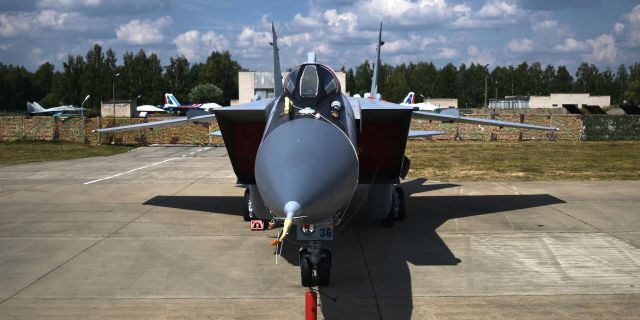Russia has stated that the MiG-41 will be able to perform tasks in spaceA MiG-41 fighter jet is being developed in Russia, which will have hypersonic speed.
In addition, it will perform tasks in space, writes theNational Interest. Its characteristics are classified, but NATO is already coming up with a name according to its classification.
Michael PeckThe Russian MiG-41 fighter will be an impressive machine.
It will have not only supersonic, but even hypersonic speed. In addition, he will be able to move far away from the Earth. The MiG-41 will be able to perform tasks in space, according to the Russian media, which, without much reason, praise the merits of the aircraft, although no one has seen it yet, and it will be ready to fly only in a few years.
Perhaps, for now, with confidence — as far as one can be sure about Russian arms supplies — one can only say that Moscow wants to develop a replacement for its aging MiG-31 fighter. The MiG-31 Foxhound fighter ("Foxhound") is a high—altitude interceptor fighter with a speed of Mach 3, the basis for which was the famous MiG-25 Foxbat fighter ("Flying Fox"). However, the first flight of the MiG-31 Foxhound was made back in 1981, and therefore it is not surprising that work on a new version is already underway. As for the capabilities attributed to the MiG-41, but they cause some doubt. Its speed will be almost 5 thousand kilometers per hour, or Mach 3.5. It is called a "hypersonic" fighter, although speeds exceeding Mach 5 (6 thousand kilometers per hour) are usually considered hypersonic. In addition, it will be equipped with hypersonic missiles and can be turned into a drone.
But that's not all. Ilya Tarasenko, CEO of the Russian Aircraft Corporation MiG, said in an interview with Russian television that the MiG-41 will have unique characteristics. "New technologies, invisibility, working in space."
Invisibility to enemy radars — in the rest of the world this is called "stealth" technology — is not something new or surprising for a fighter of the XXI century. However, the reference to "cosmos" is questionable even by the Russian media.
As a rule, space orbits begin at a distance of 100 kilometers from the Earth's surface. In 1963, the NASA X-15 aircraft reached an altitude of 107 kilometers, and this was a world record before the first flight of the space shuttle (it was considered an airplane rather than a spacecraft). At the same time, the X-15 was a rocket plane, whereas the space shuttle can be called a glider with giant launch rocket boosters. However, none of these categories, apparently, is particularly suitable for a combat aircraft, which should maneuver well enough in the low layers of the earth's atmosphere, as well as in near space, where at best there is an exceptionally low air density.
It should be recognized that the Russian media also point out that for an interceptor fighter, speed and altitude are more important qualities than maneuverability. For example, a high-speed high-altitude interceptor can be used to intercept ballistic missiles.
According to representatives of the MiG Corporation, the production of MiG-41 fighters will begin in the mid-2020s. As for Western analysts, they believe that the MiG-41 fighter project will either be too expensive for Russia, or it will be implemented no earlier than the middle of the century.
However, one question regarding this futuristic fighter can already be solved now: we are talking about the name of the MiG-41 according to the NATO codification. A fox fish? Superlisa? A fox shark MiG-41?

